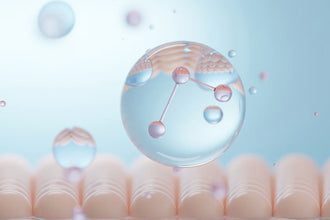Silicone Scar Cream in Postpartum Recovery: Minimizing C-Section Scars
What We Need to Know About C-Section Scars
A C-section scar isn’t just a line on the skin, it’s the body’s attempt to heal from a deep, multi-layered surgical incision that cuts through the skin, fat, and muscle. A C-section incision is not like a superficial wound, in that it leaves a layered scar, where each tissue type heals differently.
- Skin Layer: Discoloration or thickening may occur if wrongly cared for, but it often heals quickly.
- Subcutaneous Fat: This layer produces less collagen, so it is prone to uneven healing.
- Muscle Tissue: Rarely leaves visible scars, but does contribute to internal tightness, affecting scar texture and mobility.
What makes C-section scars different from other surgical scars is where they are. This area is found in the lower abdomen and is constantly on the move, stretched, and rubbing against clothing. If left unchecked, these factors can result in hypertrophic scars or uneven healing over time.
Silicone Scar Cream: A Unique Role in C-Section Recovery
Silicone scar cream is not a one-size-fits-all solution for all scars, but it is a solution to the unique challenges of postpartum recovery. Silicone's multi-faceted approach to scar care is particularly well suited for the scar's location, tension, and prolonged healing time.
Targeting Tension Points
Core movements, breastfeeding posture, and even small physical activities such as lifting the baby keep the lower abdomen constantly under tension. But silicone creams help by softening the scar tissue so that it can better flex with those movements, and therefore minimize raised or widened scars.
Improving Scar Mobility
A C-section scar can feel tight or immobile because there are adhesions between layers of tissue. Silicone cream hydrates the tissue, softens it, and makes it elastic, preventing adhesions from forming.
Minimizing External Friction
Wearing clothing, particularly postpartum girdles, can cause micro-tears in the healing tissue which in turn can cause the redness or thickening of the scar to persist for longer. Silicone scar cream forms a protective film that acts as a buffer to reduce these risks.

C-Section Scars and Hypertrophy
Hypertrophic scarring is very common with C-section scars because the body produces too much collagen during the wound healing process. This is often triggered by the scar’s location and environmental factors:
- High-Tension Area: The scar edges are constantly being pulled by the lower abdomen, which is constantly stretched. Raised scars are a reinforcement mechanism caused by this mechanical stress that signals the body to overproduce collagen.
- Inflammation: Inflammation is common post-surgery and, if left to persist, can result in irregular collagen deposition.
- Delayed Healing: Hypertrophic scarring has a greater chance to develop because postpartum hormonal fluctuations may slow the body’s ability to repair tissue.
This means you can avoid these risks by keeping a consistent silicone barrier over the scar.
| Factor | Explanation | Impact on Scar Formation |
|---|---|---|
| High-Tension Area | The lower abdomen is constantly stretched and compressed during movement. | Leads to mechanical stress, signaling the body to overproduce collagen, resulting in raised scars. |
| Inflammation | Persistent post-surgical inflammation disrupts the normal healing process. | Encourages irregular collagen deposition, increasing the risk of hypertrophic scars. |
| Delayed Healing | Hormonal fluctuations postpartum can slow the body's tissue repair mechanisms. | Prolongs the healing timeline, heightening the chances of scar thickening or raised edges. |
Wear Time: Unique Challenges of C-Section Scars
The location, depth, and movement of C-section scars make them a challenge all their own. These scars are usually in high-tension areas where the skin is stretched and compressed by activities such as bending, walking, or lifting. If not managed properly, this movement increases the risk of hypertrophic scarring or delayed healing.
Why Does Extended Wear Time Matter for C-Section Scars?
In particular, the wear time of silicone scar cream is essential for the efficacy of silicone scar cream, especially for scars in dynamic areas such as the lower abdomen. Here’s a detailed breakdown of how wear duration impacts healing for C-section scars:
-
0–6 Hours:
For shorter wear periods, the main advantage is to act as an immediate barrier to external irritants such as bacteria or friction from clothing. This offers basic protection, but not enough time for the cream to affect collagen regulation, an essential factor in scar formation.
-
6–12 Hours:
The medium wear duration of this medium ensures adequate hydration, which is important to keep the scar tissue from becoming dry and brittle. Moisture is also important because it provides a consistent moisture that softens the scar and improves the elasticity of the tissue so that it can stretch to accommodate movement. At this point, collagen production starts to level off, minimizing the chance of a raised or thickened scar.
-
12–18 Hours:
The greatest benefits come from prolonged wear. It helps to flatten raised areas, reduce itchiness, and improve the texture of the scar. This is especially important because C-section scars are typically very deep and large, and therefore take a long time to heal and often remain inflamed for a long time. It is extended wear to ensure uninterrupted coverage, minimizing environmental stressors and optimizing healing.
Wear Time Adapted to Lifestyle
Silicone scar cream can be a great way to help your scar, but postpartum life is busy and it can be hard to keep up with the wear time. Here are practical strategies for incorporating extended wear into your routine:
-
Nighttime Application:
Nighttime is a great time for extended wear because there is less movement. Silicone cream should be applied before bed so that the scar remains in contact with the cream and is hydrated and collagen is stabilized without interruption.
-
Layering Under Clothing:
During the day, use breathable, loose-fitting fabrics to prevent friction over the cream. If wearing a postpartum girdle, make sure it doesn’t interfere with the adhesion of the cream or put too much pressure on the scar.
-
Midday Reapplication:
Mothers who sweat or move throughout the day can apply silicone cream quickly to reapply as necessary, without interrupting their daily activities.
The Science Behind Prolonged Use
Contracture is a condition where the scar tissue tightens, restricting movement and causing discomfort, and is something C-section scars are prone to. Prolonged use of silicone scar cream counteracts this by:
- Improving Skin Elasticity: Continuous hydration provides the skin with the ability to stretch and contract naturally without discomfort, reducing stiffness.
- Reducing Collagen Overproduction: This extended wear prevents the excessive accumulation of collagen that is a leading cause of hypertrophic scarring.
- Protecting Against Friction: It creates a barrier between the waistband of clothing or baby carriers and the cream, which can otherwise cause irritation that slows healing.
This tailored approach to wear time directly takes into account the physical demands put on a C-section scar and allows for a smoother recovery and better long-term results.
Conclusion: Tailored C-Section Scar Healing
The location, depth, and movement exposure of C-section scars means they need special care. Silicone scar cream is not just cosmetic; it is a scientifically supported tool that works in concert with the body’s natural healing processes. Tailor wear time to your lifestyle, use it for a prolonged period of time, and you’ll see a dramatic improvement in scar texture, elasticity, and appearance.
Consistency and paying attention to detail is the key to success. Scar cream is versatile and effective in nighttime applications, to protect the scar during daily activities and as part of a structured postpartum recovery plan. By being proactive and addressing the specific challenges of C-section scars, mothers can have smoother, softer scars and regain confidence in their postpartum journey.
References:
https://pubmed.ncbi.nlm.nih.gov/29397441/
https://www.sciencedirect.com/science/article/abs/pii/S0305417922000559
https://pmc.ncbi.nlm.nih.gov/articles/PMC8246489/
https://pmc.ncbi.nlm.nih.gov/articles/PMC2918339/
General Disclaimer: All information here is for educational purposes only and is not meant to cure, heal, diagnose nor treat. This information must not be used as a replacement for medical advice, nor can the writer take any responsibility for anyone using the information instead of consulting a healthcare professional. All serious disease needs a physician.














